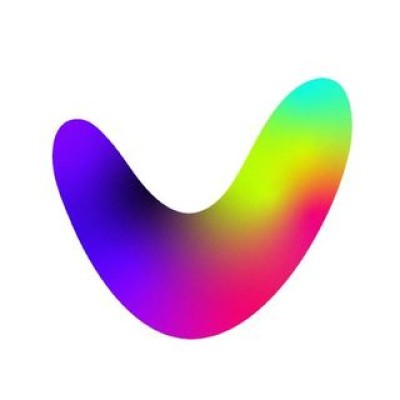Measuring the Pulse of AI: The Launch of Open RAG Eval
April 10, 2025, 11:02 pm
In the fast-paced world of artificial intelligence, accuracy is king. As enterprises dive deeper into the realm of retrieval-augmented generation (RAG), the need for precise evaluation methods has never been more critical. Enter Open RAG Eval, a new open-source framework that promises to transform how organizations assess their AI systems. Developed by Vectara in collaboration with researchers from the University of Waterloo, this framework aims to provide a scientific approach to measuring AI performance.
The landscape of AI is littered with promises. Companies invest heavily in RAG systems, hoping to enhance their AI's accuracy and reduce hallucinations—those pesky moments when AI generates information that sounds plausible but is entirely fabricated. Yet, the challenge remains: how do we measure the effectiveness of these systems? The subjective “this looks better than that” approach is no longer sufficient. Organizations need a rigorous, reproducible methodology to gauge their AI's performance.
Open RAG Eval emerges as a beacon of hope. It replaces guesswork with data-driven insights. The framework evaluates RAG systems using two primary categories: retrieval metrics and generation metrics. This dual approach allows organizations to pinpoint exactly where their systems falter. For instance, low retrieval scores might indicate the need for better document chunking, while weak generation scores could suggest suboptimal prompts or an underperforming language model.
At its core, Open RAG Eval employs a nugget-based methodology. This means breaking down AI responses into essential facts—nuggets—and measuring how effectively the system captures these nuggets. The framework assesses four specific metrics: hallucination detection, citation accuracy, auto nugget presence, and a holistic method called UMBRELA (Unified Method for Benchmarking Retrieval Evaluation with large language model Assessment). This comprehensive evaluation provides a clear view of how different components of the RAG pipeline interact to produce final outputs.
The technical innovation behind Open RAG Eval lies in its automation through large language models (LLMs). Previously, evaluating AI responses was a labor-intensive process. Now, with sophisticated prompt engineering, LLMs can perform evaluation tasks like identifying nuggets and assessing hallucinations. This shift not only streamlines the evaluation process but also enhances its accuracy.
As enterprises grapple with increasingly complex RAG implementations, the need for robust evaluation frameworks becomes paramount. Many organizations are moving beyond simple question-answering systems to multi-step agentic systems. In this context, catching hallucinations early is crucial. A single misstep can compound through subsequent steps, leading to incorrect actions or answers. Open RAG Eval provides the tools necessary to catch these errors before they escalate.
The competitive landscape for AI evaluation frameworks is heating up. Other players, like Hugging Face and Galileo, have launched their own evaluation technologies. However, Open RAG Eval stands out due to its strong academic foundation and focus on the RAG pipeline. It builds on Vectara’s previous contributions to the open-source AI community, including the widely adopted Hughes Hallucination Evaluation Model (HHEM).
The implications of Open RAG Eval extend beyond mere measurement. For technical decision-makers, it offers a systematic way to optimize RAG deployments. Organizations can establish baseline scores for their existing systems, make targeted configuration changes, and measure the resulting improvements. This iterative approach replaces guesswork with informed decision-making.
Moreover, the roadmap for Open RAG Eval includes future enhancements that could automate configuration suggestions based on evaluation results. This means organizations could not only measure performance but also receive actionable insights to improve it. The potential to incorporate cost metrics in future versions could help enterprises balance performance against operational expenses, a critical consideration in today’s budget-conscious environment.
For early adopters, the framework presents an opportunity to streamline their RAG evaluation processes. Companies like Anywhere.re are already expressing interest in leveraging Open RAG Eval to enhance their AI systems. By understanding benchmarks and performance expectations, organizations can make predictive scaling calculations, reducing reliance on subjective user feedback.
In a world where AI is becoming increasingly central to business operations, the launch of Open RAG Eval represents a significant step forward. It provides enterprises with a scientific approach to evaluation, moving beyond anecdotal evidence and vendor claims. For those just beginning their AI journey, it offers a structured framework to avoid costly missteps as they build out their RAG infrastructure.
As the AI landscape continues to evolve, the need for robust evaluation methodologies will only grow. Open RAG Eval is not just a tool; it’s a game-changer. It empowers organizations to measure, optimize, and ultimately enhance their AI systems. In the race for AI supremacy, having the right evaluation framework could be the difference between leading the pack and falling behind.
In conclusion, Open RAG Eval is more than a framework; it’s a lifeline for enterprises navigating the complex waters of AI. With its rigorous methodology and focus on actionable insights, it promises to elevate the standards of AI evaluation. As organizations embrace this new tool, they will be better equipped to harness the full potential of their AI systems, ensuring accuracy and reliability in an increasingly automated world.
The landscape of AI is littered with promises. Companies invest heavily in RAG systems, hoping to enhance their AI's accuracy and reduce hallucinations—those pesky moments when AI generates information that sounds plausible but is entirely fabricated. Yet, the challenge remains: how do we measure the effectiveness of these systems? The subjective “this looks better than that” approach is no longer sufficient. Organizations need a rigorous, reproducible methodology to gauge their AI's performance.
Open RAG Eval emerges as a beacon of hope. It replaces guesswork with data-driven insights. The framework evaluates RAG systems using two primary categories: retrieval metrics and generation metrics. This dual approach allows organizations to pinpoint exactly where their systems falter. For instance, low retrieval scores might indicate the need for better document chunking, while weak generation scores could suggest suboptimal prompts or an underperforming language model.
At its core, Open RAG Eval employs a nugget-based methodology. This means breaking down AI responses into essential facts—nuggets—and measuring how effectively the system captures these nuggets. The framework assesses four specific metrics: hallucination detection, citation accuracy, auto nugget presence, and a holistic method called UMBRELA (Unified Method for Benchmarking Retrieval Evaluation with large language model Assessment). This comprehensive evaluation provides a clear view of how different components of the RAG pipeline interact to produce final outputs.
The technical innovation behind Open RAG Eval lies in its automation through large language models (LLMs). Previously, evaluating AI responses was a labor-intensive process. Now, with sophisticated prompt engineering, LLMs can perform evaluation tasks like identifying nuggets and assessing hallucinations. This shift not only streamlines the evaluation process but also enhances its accuracy.
As enterprises grapple with increasingly complex RAG implementations, the need for robust evaluation frameworks becomes paramount. Many organizations are moving beyond simple question-answering systems to multi-step agentic systems. In this context, catching hallucinations early is crucial. A single misstep can compound through subsequent steps, leading to incorrect actions or answers. Open RAG Eval provides the tools necessary to catch these errors before they escalate.
The competitive landscape for AI evaluation frameworks is heating up. Other players, like Hugging Face and Galileo, have launched their own evaluation technologies. However, Open RAG Eval stands out due to its strong academic foundation and focus on the RAG pipeline. It builds on Vectara’s previous contributions to the open-source AI community, including the widely adopted Hughes Hallucination Evaluation Model (HHEM).
The implications of Open RAG Eval extend beyond mere measurement. For technical decision-makers, it offers a systematic way to optimize RAG deployments. Organizations can establish baseline scores for their existing systems, make targeted configuration changes, and measure the resulting improvements. This iterative approach replaces guesswork with informed decision-making.
Moreover, the roadmap for Open RAG Eval includes future enhancements that could automate configuration suggestions based on evaluation results. This means organizations could not only measure performance but also receive actionable insights to improve it. The potential to incorporate cost metrics in future versions could help enterprises balance performance against operational expenses, a critical consideration in today’s budget-conscious environment.
For early adopters, the framework presents an opportunity to streamline their RAG evaluation processes. Companies like Anywhere.re are already expressing interest in leveraging Open RAG Eval to enhance their AI systems. By understanding benchmarks and performance expectations, organizations can make predictive scaling calculations, reducing reliance on subjective user feedback.
In a world where AI is becoming increasingly central to business operations, the launch of Open RAG Eval represents a significant step forward. It provides enterprises with a scientific approach to evaluation, moving beyond anecdotal evidence and vendor claims. For those just beginning their AI journey, it offers a structured framework to avoid costly missteps as they build out their RAG infrastructure.
As the AI landscape continues to evolve, the need for robust evaluation methodologies will only grow. Open RAG Eval is not just a tool; it’s a game-changer. It empowers organizations to measure, optimize, and ultimately enhance their AI systems. In the race for AI supremacy, having the right evaluation framework could be the difference between leading the pack and falling behind.
In conclusion, Open RAG Eval is more than a framework; it’s a lifeline for enterprises navigating the complex waters of AI. With its rigorous methodology and focus on actionable insights, it promises to elevate the standards of AI evaluation. As organizations embrace this new tool, they will be better equipped to harness the full potential of their AI systems, ensuring accuracy and reliability in an increasingly automated world.

